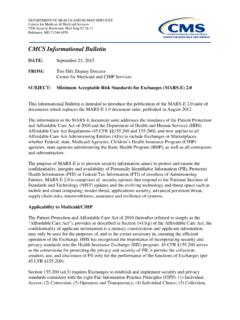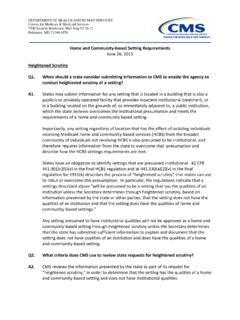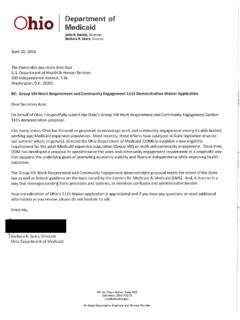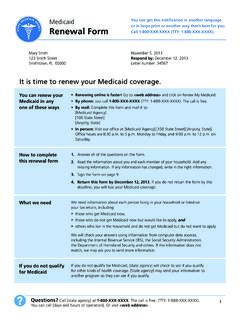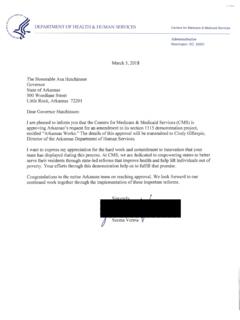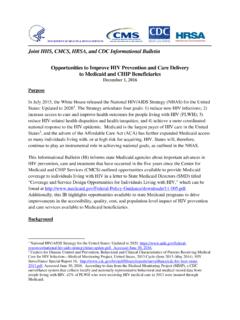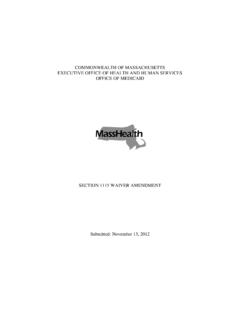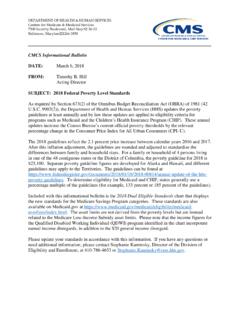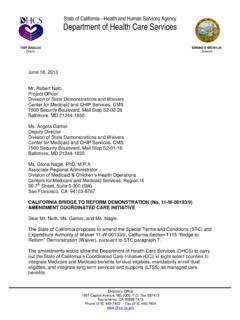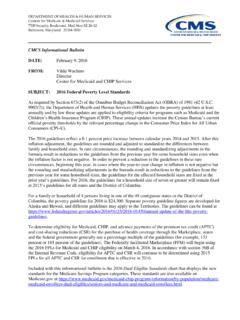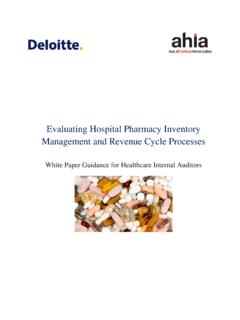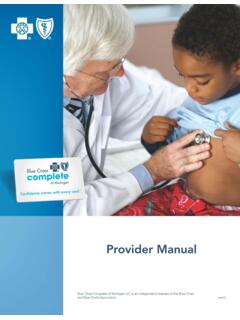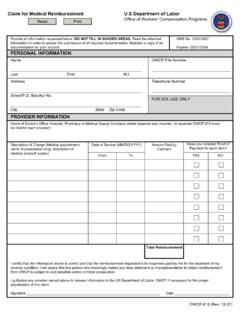Transcription of Using the Type of Bill to Classify Institutional Claims in ...
1 Using the Type of bill to Classify Institutional Claims in 2017 October 2019 Brief #504 2 2017 TAF version 2 TAF data quality brief Service use information This analysis focused on 46 states, the District of Columbia, and Puerto Rico. Mississippi, Missouri, Montana, and Nebraska were excluded from the analysis. Key Findings In the T-MSIS Analytic Files, the type of bill field can be used to differentiate between Institutional and professional Claims , and to provide information about the type of facility and services being billed on Institutional Claims .
2 This brief identifies states with concerning rates of missing or unexpected type of bill values in the IP, OT and LT files in 2017. The information in the type of bill field is complete and reliable in the IP file in 37 states. In Georgia and Virginia, however, the information captured in this field suggests that the states may have erroneously submitted outpatient Claims in their IP file instead of in the OT file. Other states with unusable or highly concerning data in the IP file are listed in Table 2.
3 Thirty-three states submitted nearly all LT records with a type of bill value for an expected provider type, such as nursing facilities and intermediate care facilities for individuals with intellectual or developmental disabilities. Missing and invalid type of bill values were a larger problem in the LT file than in the IP file. States with unusable or highly concerning data in the LT file are listed in Table 3. Because the OT file contains a mixture of Institutional and professional Claims , it is difficult to evaluate the completeness and quality of the information in the type of bill field in this file.
4 However, California, Illinois, Washington, and Wyoming had high rates of unexpected or invalid type of bill values in their OT records, indicating problems in the quality of the data. Other states with unusable or highly concerning data in the other services file are listed in Table 4. Background All medical Claims fall into one of two categories: those submitted on an Institutional claim form and those submitted on a professional claim In general, facilities such as hospitals, nursing facilities, intermediate care facilities for individuals with intellectual or development disabilities, rehabilitation facilities, home health agencies.
5 And clinics submit Institutional 1 Institutional Claims are often referred to as UB-04 Claims when submitted in paper form or as 837I Claims when submitted in electronic form. Professional Claims are referred to as CMS-1500 Claims when submitted in paper form or 837P Claims when submitted in electronic form.
6 MACBIS medicaid and CHIP Business Information Solutions TAF DQ BRIEF #5042 2 Claims . Physicians (both individual and groups), other clinical professionals, freestanding laboratories and outpatient facilities,2 ambulances, and durable medical equipment suppliers submit professional Claims . It is important for users of the T-MSIS Analytic Files (TAF) to be able to distinguish between Institutional and professional Claims , as the standardized fields in each form and hence the information available for each type of claim differ slightly.
7 One important field that is reported only on Institutional Claims is the type of bill . This field is used to report the type of facility that provides care. Because the type of bill field is used by most payers to determine the payment amount for the claim , it is often well-populated in Claims data and is considered a reliable source of information. As a result, it is often the first and easiest data element used to differentiate among key settings and types of Institutional care, such as inpatient hospital stays, outpatient hospital visits, or nursing facility This brief examines the completeness and quality of the type of bill field in the TAF for 2017 and whether the distribution of values within each medical claim file reflects the types of Claims that states are expected to Methods Using the 2017 TAF.
8 5 we examined the type of bill field (BILL_TYPE_CD) on header records in the inpatient (IP), long-term care (LT), and other services (OT) files. Since type of bill is not captured on pharmacy Claims , we did not examine the pharmacy (RX) file. We included in the analysis fee-for-service (FFS) Claims and managed care encounter records for both medicaid and CHIP beneficiaries in 46 states, the District of Columbia, and Puerto Mississippi, 2 Freestanding facilities are those not owned by a hospital or another Institutional provider, such as independent ambulatory surgery centers.
9 3 The national provider identifier or provider taxonomy can be used to differentiate among most settings of care, such as nursing facilities versus hospitals, but it requires outside data that can map a large number of potential values to provider type. As of 2017, not all states consistently reported these data elements. The revenue code can be used to differentiate types of care, such as inpatient versus outpatient services, but it does not provide information about the type of institution that delivered the care.
10 Type of service is considered less reliable, but this field could be used when type of bill is missing or invalid. 4 The inpatient file should primarily include Institutional Claims for inpatient hospital services, whereas the long-term care file should include Institutional Claims for overnight stays at nursing facilities, intermediate care facilities for individuals with intellectual or developmental disabilities, and residential treatment facilities. The other services file should include a mix of outpatient Institutional Claims and professional Claims from all settings of care.
